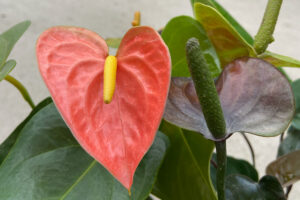Pansies, scientifically known as Viola tricolor, have a fascinating history rooted in the wild viola species of Europe and Asia. In the 19th century, European gardeners embarked on hybridization endeavors to create new pansy varieties with desirable traits, a movement significantly influenced by English gardener William Thompson. This period marked the beginning of a prolonged journey of breeding efforts that extended well into the 20th century, resulting in the diverse range of cultivars available today.
Modern pansies have evolved to exhibit a kaleidoscope of colors and patterns, with hybrid varieties prized for their uniformity and vigor. Their popularity in gardens worldwide stems from their captivating beauty and remarkable versatility.
Origin of the Name
Beyond their ornamental value, pansies hold cultural significance, with their name “pansy” derived from the French word “pensée,” meaning “thought.” They symbolize love, admiration, and remembrance across different cultures. Furthermore, pansies are not just for decoration; they are edible flowers commonly used to adorn dishes such as cakes and salads. Their wide array of colors, including purple, yellow, white, orange, and blue, with some featuring bi-colored petals, adds visual delight to culinary creations.
Suitable for Diverse Gardening Environments
Thriving in cooler temperatures, pansies are typically planted in the fall or early spring and can withstand light frosts. They are hardy annuals, adaptable to various soil conditions and light levels, making them suitable for diverse gardening environments. Pansies also play a role in supporting biodiversity by attracting pollinators like bees and butterflies with their nectar.
Not Just for the Garden
Pansies, with their vibrant colors and distinctive faces, are a visual delight in gardens and as edible garnishes and hold a storied place in the realm of herbal remedies. Historically, these flowers have been more than just a feast for the eyes; they have been harvested and used for their medicinal properties, a practice that dates back centuries. Pansies’ use in traditional medicine is rooted in their diverse range of bioactive compounds, including flavonoids, tannins, and salicylic acid.
A Holistic Approach
Pansies in traditional herbal medicine embody a holistic approach to health, emphasizing prevention and the body’s natural balance. While the scientific community continues to explore the full spectrum of their medicinal benefits, the historical use of pansies highlights the interconnectedness of human health and nature. It’s important to note, however, that while pansies have been used traditionally for various health issues, one should consult with a healthcare provider before using them for medicinal purposes, especially considering potential allergies or interactions with other medications.
Cultivation and Care
To care for pansies, providing adequate sunlight, well-drained soil, and regular watering at the base of the plant is crucial. Fertilization with a balanced fertilizer for flowering plants and deadheading spent flowers promotes continuous blooming. Vigilance against pests and diseases, as well as protection from freezing temperatures in colder climates, ensures the health and longevity of pansies. Removing dead foliage in spring facilitates new growth and vibrant blooms throughout the growing season.
Pansies embody a rich tapestry of history, culture, and practicality, making them beloved additions to gardens worldwide.


